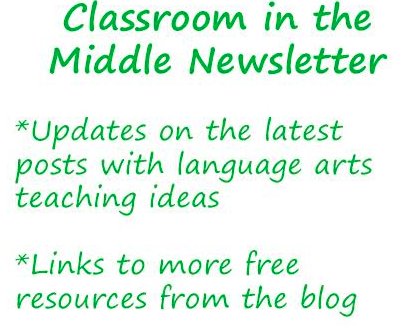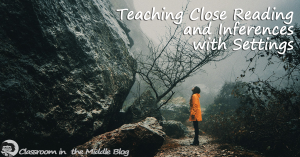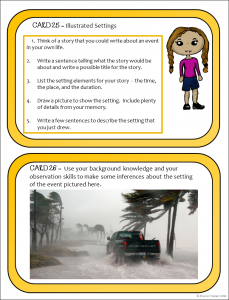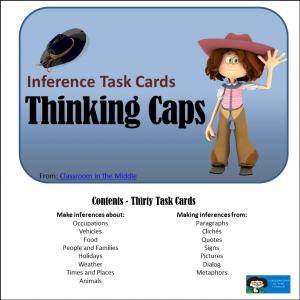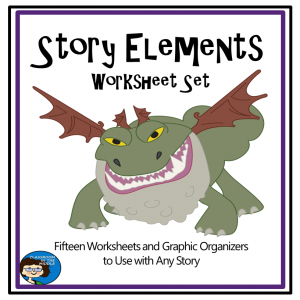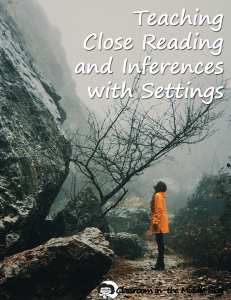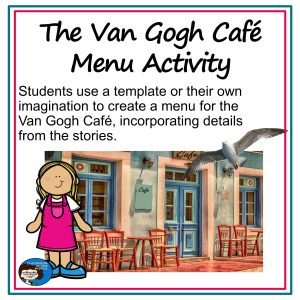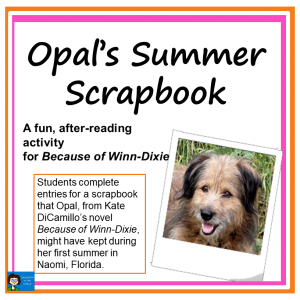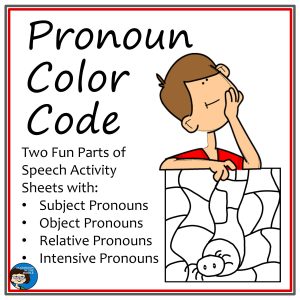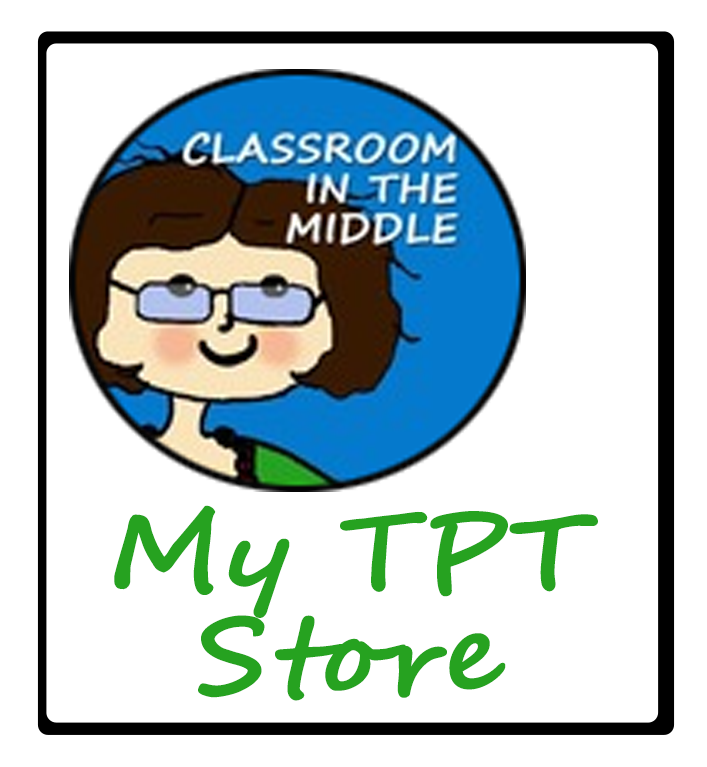Setting was one of the story elements that I used to spend little time on when teaching story elements. Once the kids could identify the time, place, and duration of a story, that was it. On to more interesting topics. But lately I’ve noticed that story settings are an untapped source of material for teaching important, and complex, reading skills like close reading and making inferences.
There are two ways to go with this. First is by studying the setting details in a story that the kids are reading. The second way is to look at specific places and times and think about stories that might take place in that setting, maybe for a short narrative that the students will write themselves.
Studying the Setting of Story
SETTING DETAILS, SETTING WORDS
Using a story that the class has read, students can name the setting elements – the time, the place, and the duration of the story – and then locate details in the story as text-based evidence for their answer. Students can also look for words and phrases that the author uses to paint a picture of his setting. In addition to landscapes and buildings, students can take note of things like clothing and hair styles that give a clue to the time period and maybe the place as well.
DRAW THE SETTING, DRAW A SCENE
An activity that is always fun is for kids to locate as many details as they can for one setting in a story and then to draw the setting as they picture it. To make it a little more challenging, they could draw an actual scene (one event) from the story with characters in appropriate dress.
COMPARE THE SETTINGS
As a class, you could also make a list of different stories that the kids have read with similar settings. Then talk about the differences and similarities among the stories on the list. To follow up with some individual practice, kids could make a chart comparing the settings of two favorites.
MAP IT
Or, to bring in some map reading practice, kids could locate the settings on a map. This works especially well with a journey story. For example, after reading the novel Walk Two Moons, the class could map out the journey that Sal took with her grandparents.
Thinking about Settings for a Story of Their Own
START WITH A PHOTO
Photographs always seem to add interest to a lesson, and using photos of interesting places is a great way to lead students into thinking about the place in which they will locate their own story. For fictional narratives, photos that look a little bit mysterious work great. For personal narratives, kids could bring in a family photo to spark their memory of setting details.
CHANGE THE SETTING
Another way to use setting as an entry point for students own writing could be to ask students to suppose that a familiar story was set in a different time period. Classic stories that the kids will remember from their younger years work well for this as well as stories that they are reading this year. For example, ask the kids to suppose that a particular story was set in the future instead of the past, and then to write the revised story.
APPLY IT TO INFORMATIONAL TEXTS
Of course, settings are worth studying in informational texts as well as in fiction. Students can look at news articles, historical articles, or scientific ones for details about the time and the place. Just as with fiction, they can make note of setting details that the author uses to paint the scene. Kids could write a fictional story or a poem of their own using the setting from an informational article that they have just read.
PRACTICE WITH TASK CARDS
I’ve combined lots of these ideas into a set of task cards, my second set of story element cards. (The first one was “Characterization Kids.”) If you would like to see more information about this new set, check out Setting the Scene. The sample shown here includes one card for students to plan a setting for a story of their own, and one card for students to study the setting of a photograph.
Related Resources

